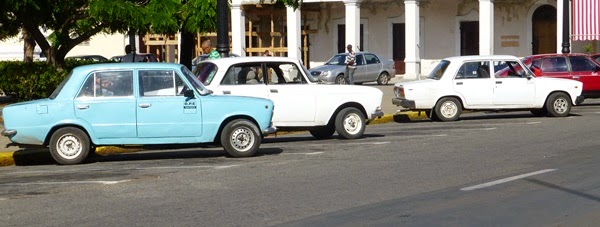Sunday, March 30, 2014
Havana
Alongside the elevators in the Hotel Nacional we noted a
mail chute, and in the lobby, it emptied into a beautiful mailbox. Those of us of a certain age remember them—they
were made by a company called Cutler which was in Rochester, NY! It still exists here in Havana, and is still
functional:
Our morning began with a wonderful lecture from a Cuban
architect, Miguel Coyula, who knows our brother-in-law Lee Cott (who did work
in Havana). Coyula discussed the old
colonial architecture and the rehabilitation efforts underway to maintain what
was here. He also talked about the
conflict between developers who wish to raze decrepit buildings to put up
housing and other modern buildings, and the preservationists who are afraid
that if the character of old Havana is lost the attraction to tourists will diminish
greatly. The main plazas of Havana have
been completely rehabilitated, and those efforts are moving to the streets
which adjoin the Plazas. All the
increased income from tourism is being funneled into rehabilitation efforts but
they have a long long way to go.
Following the lecture we were entertained by a children’s
chorus who came, with many parents, to sing for us. An aside here: Our Cuban guide, responding to a question
about racism, had made it clear to us that although officially and in practice,
Cuba is a color-blind society, vestiges of racism exist. The most prevalent example of this is a kind
of classism based on skin color, with the fairest color being the most
desirable. We couldn’t help but notice
that as the children lined up to sing, the arrangement was not by height. Rather, all the light-colored faces were in
the front row and the dark-colored ones were in the back:
We then went for a long walk through Old Havana, which was
lovely:
Here’s the Plaza de
la Cathedral (1729):
The Plaza de Armas is beautiful, and all four sides are
covered with vendors and mostly with booksellers:
We have a phrase we use when something is really strange, “As
queer as a 3-dollar bill”. Well, the
Cubans have a 3-peso note with Che on it.
Pristine copies are for sale:
Lots more at: http://www.hotelraquel.com/
Public art is everywhere, some of it a bit hard to
fathom. Here’s a very large sculpture of
a nude riding a rooster while she holds a giant fork:
Victor

































































